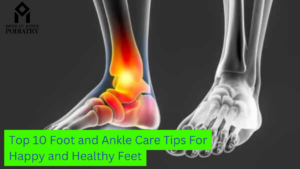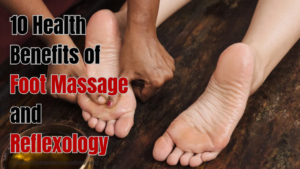Introduction to Foot and Ankle Conditions
Foot and ankle conditions can significantly impact one’s mobility and overall quality of life. From everyday activities to sports performance, these issues can cause discomfort and hinder functionality. Seeking timely treatment is crucial to alleviate symptoms and prevent further complications.
Common Foot and Ankle Conditions
Plantar Fasciitis
One of the most common causes of heel pain, plantar fasciitis, occurs due to inflammation of the plantar fascia—a thick band of tissue that connects the heel bone to the toes. Individuals often experience sharp pain in the heel or arch, especially in the morning or after prolonged periods of rest.
Achilles Tendonitis
Achilles tendonitis involves inflammation of the Achilles tendon, which connects the calf muscles to the heel bone. It commonly occurs in athletes or individuals who engage in repetitive activities, such as running or jumping. Symptoms include pain and stiffness in the back of the ankle.
Bunions
Bunions are bony protrusions that form at the base of the big toe, causing it to lean inward toward the other toes. This condition can be hereditary or aggravated by ill-fitting footwear. Bunions may cause pain, swelling, and difficulty wearing shoes comfortably.
Sprains and Strains
Sprains occur when ligaments—tissues that connect bones—are stretched or torn, usually due to sudden twisting or trauma. Strains involve overstretching or tearing of muscles or tendons. Both injuries commonly affect the ankle and can range from mild to severe.
Neuromas
Neuromas are benign growths of nerve tissue, often found between the metatarsal bones in the ball of the foot. They can cause sharp, burning pain, tingling, or numbness in the toes, making it uncomfortable to walk or stand for long periods.
Non-Surgical Treatment Options
Rest, Ice, Compression, Elevation (RICE)
The RICE method is often recommended for acute injuries to reduce pain and swelling. It involves resting the affected area, applying ice packs, using compression bandages, and elevating the foot to minimize inflammation and promote healing.
Physical Therapy
Physical therapy aims to strengthen the muscles surrounding the foot and ankle, improve range of motion, and enhance stability and balance. Therapists may prescribe specific exercises and stretches tailored to individual needs to alleviate pain and prevent recurrence.
Orthotic Devices
Orthotic devices, such as shoe inserts or custom-made orthotics, can provide support and alignment for the feet, reducing pressure on affected areas and improving biomechanics. They are commonly used to treat conditions like plantar fasciitis, bunions, and neuromas.
Medications
Over-the-counter or prescription medications, such as nonsteroidal anti-inflammatory drugs (NSAIDs) or corticosteroids, may be recommended to manage pain and inflammation associated with foot and ankle conditions. However, prolonged use should be monitored by a healthcare professional.
Surgical Treatment Options
In cases where conservative measures fail to provide relief or the condition worsens, surgical intervention may be necessary. The type of surgery depends on the specific diagnosis and severity of the problem, ranging from minimally invasive procedures to more complex reconstructions.
Preventive Measures
Importance of Prevention
Taking proactive steps to maintain foot and ankle health can help prevent injuries and reduce the risk of developing chronic conditions. This includes wearing supportive footwear, practicing good hygiene, and avoiding overuse or excessive strain on the feet.
Tips for Maintaining Foot and Ankle Health
Regularly inspecting the feet for any signs of abnormalities or injuries.
Wearing properly fitting shoes with adequate support and cushioning.
Gradually increasing activity levels and incorporating rest periods to prevent overuse injuries.
Avoiding walking barefoot in public places to minimize the risk of infections or injuries.
Alternative Therapies
Acupuncture
Acupuncture involves the insertion of thin needles into specific points on the body to stimulate energy flow and promote healing. It has been used for centuries to relieve pain and improve mobility in individuals with various musculoskeletal conditions.
Chiropractic Care
Chiropractic adjustments focus on realigning the spine and other joints to alleviate pressure and tension, improving overall function and mobility. Some chiropractors specialize in treating foot and ankle issues using manual techniques and therapeutic modalities.
Massage Therapy
Massage therapy can help relax tense muscles, improve circulation, and reduce pain and stiffness in the feet and ankles. Techniques such as deep tissue massage, myofascial release, and trigger point therapy target specific areas of discomfort to provide relief.
Exercise and Stretching Routines
Regular exercise and stretching can strengthen the muscles, ligaments, and tendons surrounding the foot and ankle, enhancing stability and flexibility. Incorporating activities like yoga, Pilates, or aquatic exercises can improve balance and coordination while reducing the risk of injury.
Future Developments in Treatment
With ongoing advancements in medical technology and research, the landscape of foot and ankle treatment continues to evolve. From innovative surgical techniques to novel therapies, future developments hold promise for improved outcomes and enhanced patient care.
Conclusion
In conclusion, addressing foot and ankle conditions promptly and effectively is essential for maintaining mobility and overall well-being. Whether through conservative measures, surgical intervention, or alternative therapies, there are numerous treatment options available to alleviate symptoms and improve quality of life. By prioritizing preventive care and seeking professional guidance, individuals can take proactive steps toward optimal foot and ankle health.
FAQs
How long does it take to recover from foot surgery?
Recovery time varies depending on the type of surgery and individual factors, but it typically ranges from a few weeks to several months.
Can I prevent foot and ankle conditions through exercise?
Regular exercise and stretching can help strengthen the muscles and ligaments, reducing the risk of injuries and chronic conditions.
Are orthotic devices expensive?
The cost of orthotic devices varies depending on factors such as customization and material quality, but they are generally considered a worthwhile investment in foot health.
Is surgery always necessary for bunions?
Surgery may be recommended for severe or symptomatic bunions that do not respond to conservative treatments, but less invasive options are often explored first.
What are the risks associated with surgery for Achilles tendonitis?
Potential risks of Achilles tendon surgery include infection, nerve damage, and prolonged recovery, but these complications are relatively rare and can be minimized with proper care and follow-up.




